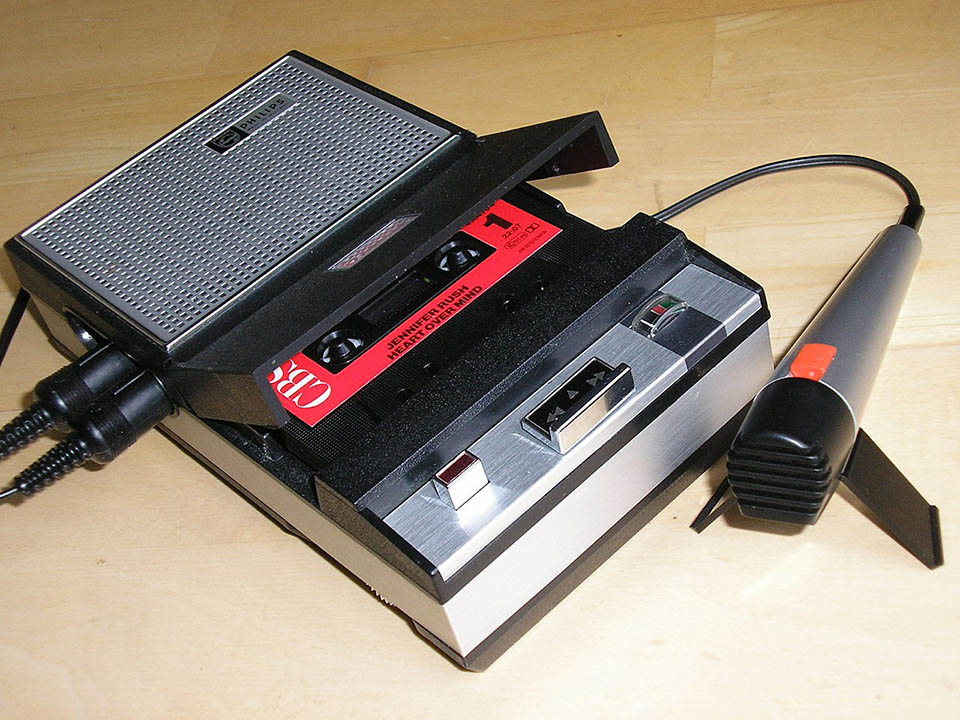
A few days ago, I was rummaging through some clutter at the back of a wardrobe and came across a plastic bag containing relics of another age. No, not dinosaur bones, but almost. The bag contained a couple of dozen audio cassettes that I must have brought from England many years ago. You probably remember audio cassettes. Perhaps you still have some. The compact cassette format was invented in 1963 by a Philips design team led by the Dutch engineer and inventor Lou Ottens. The format became a world standard, largely because Philips offered the patent and invention to other manufacturers such as National and Sony.
Compact cassettes were available in two forms either as blank, recordable tape or as commercially pre-recorded cassettes. The mass production of blank cassettes began in 1964 in Hanover. Prerecorded music cassettes first appeared in Europe in 1965 and in the USA a year later. Audio quality rapidly improved with chromium oxide tape and many cassette players included Dolby noise reduction circuitry and an improved tape transport mechanism. The audio quality of these later machines was remarkably good and the cassette deck became a standard item the home hi-fi system. I still have my old Nakamichi cassette deck, which sits only a few feet away, though it’s seldom used. Even so, the format proved so durable that audio cassettes are still available.
I recall seeing vast selections of classical cassettes in the local record shops but unlike a record player, you could take a cassette player anywhere. Mostly for this reason, the cassette’s popularity grew during the 1970s and 1980s and it found a special niche in rock and pop music. Portable and powerful stereo tape decks, sometimes known as and “boom boxes” or “ghetto blasters” became highly sought-after consumer products among some strata of society. The technological development culminated in the appearance of the Sony Walkman portable cassette player in 1979. I still have mine.
Sometime during the early 1970s, my parents decided to replace their antiquated gramophone with a stereo cassette player. You know the kind of thing: a silver box-like object with speakers at each end and a central unit containing the cassette player, FM radio and amplifier. I bought many classical cassettes for my parents over the years, but one of my mother’s all-time favourites was the Dvorák Piano Trio No. 4 in E minor, Op. 90. Scored for piano, violin and cello, it’s perhaps better known as the Dumky Trio and it’s among the composer’s best-known works. It would have been my mother’s birthday today, so this seems a good enough reason to play it.
Antonín Dvorák (1841-1904): Piano Trio No. 4 in E minor (“Dumky”), Op. 90. Trio Gaspard. (Duration: 31:35; Video: 1080p HD)
To my mind, the finest recording of this work currently available is the 2008 performance by the Beaux Arts Trio, featuring the incomparable Menahem Pressler (pno); Daniel Hope (vln) and Antonio Meneses (vc) but the video quality is awful and each movement is on a separate YouTube link, thus making a complete performance impossible. I’ve listened to several alternatives on YouTube but this performance by Trio Gaspard seemed the most expressive.
The curious name dumky may need some explanation. It’s the plural form of the Ukrainian word dumka which also appears in other Slavonic languages. The word refers to epic songs or ballads characterized by sudden changes from sadness to unbridled joy. During the late nineteenth century, several Slavonic composers used the dumka genre for instrumental and orchestral music. In this piano trio, each of the six movements is a dumka, hence the use of the plural form dumky.
The classical piano trio usually has an opening fast movement, a slow middle movement and a fast movement to finish. But in this work, completed in 1891, Dvorák (pronounced d’VAW-r shahk) ditched tradition in favour of something more radical. The first three sections are played without a break (or should be) thus giving the effect of one long first movement. If such things interest you, analytical notes can be found online, but there really is so much to enjoy in this music without the need of programme notes.
It’s full of magic moments both in the music and the performance: the beautifully-paced piano accompaniment at 04:27, followed by the poignant cello solo gently accompanied by violin and piano; the lovely change into the major key at 05:16; the heart-warming harmonic shifts from 05:57 onwards; the sparkling playing at 07:07, the dreamy, ethereal string playing at 08:50. And so on. The entire composition is rich in emotion and full of eloquent melodies, vibrant harmonic colours and animated rhythms. It seems to speak of old Bohemia and it’s easy to see why my mother adored the work so much.





